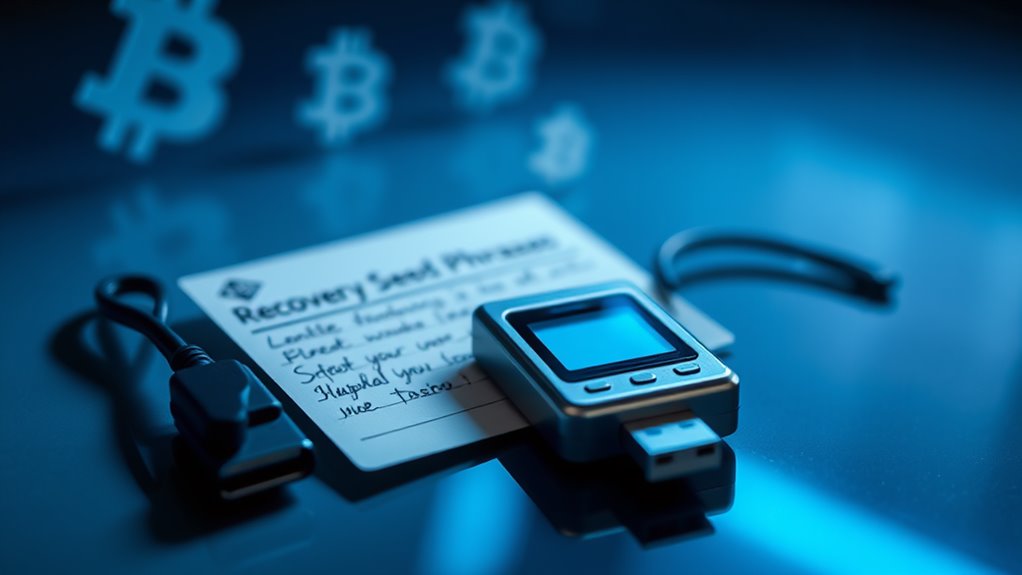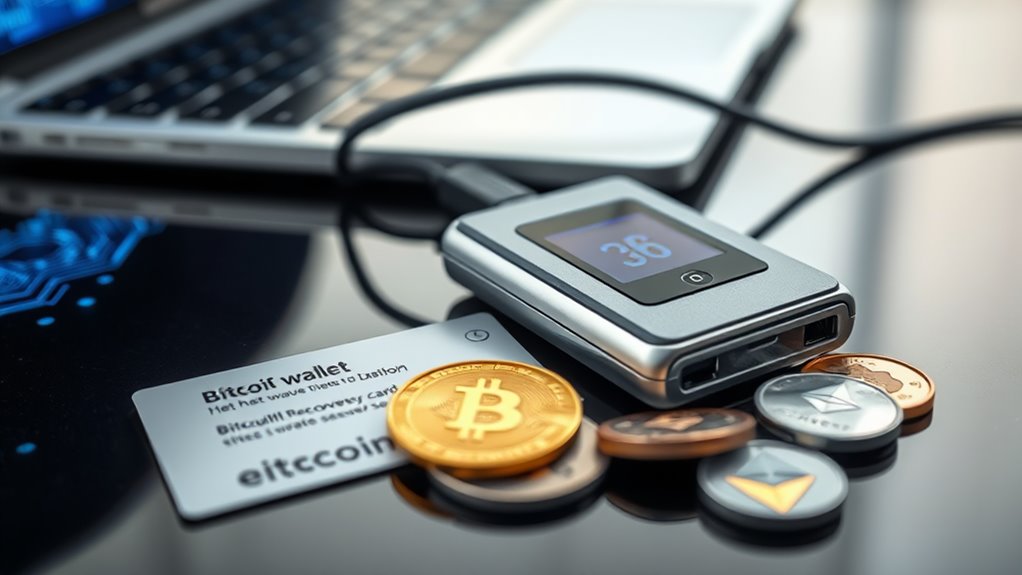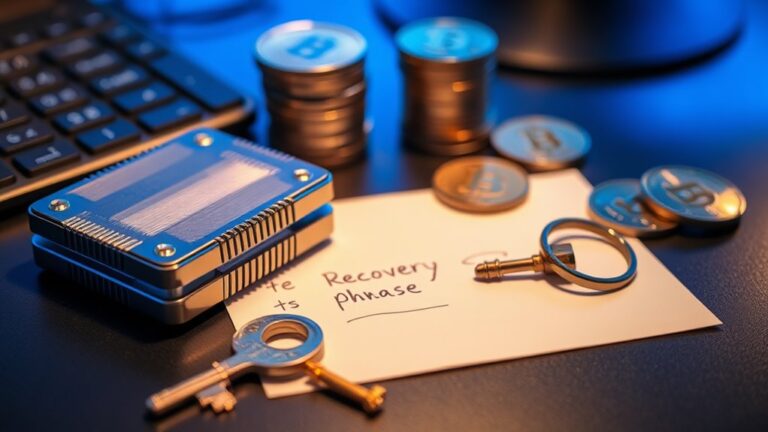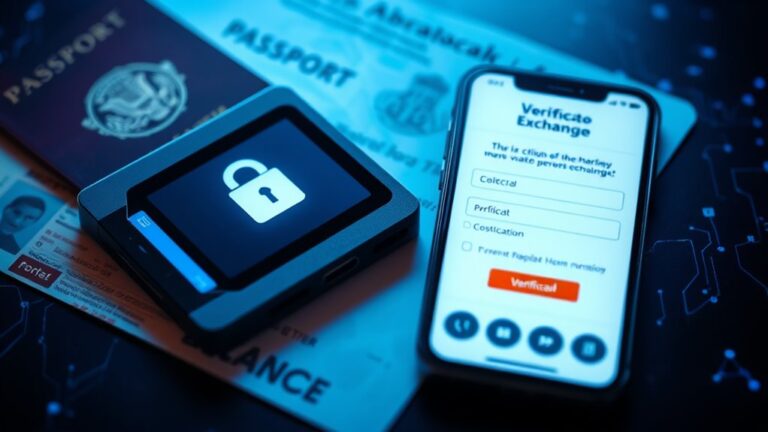What Is a Hardware Wallet?
Note: This post may contain affiliate links, and we may earn a commission (with No additional cost for you) if you purchase via our link. See our disclosure for more info. The gold and crypto world is constantly changing. This is not financial, investment, legal, or professional advice. So, please verify the information on the gold and cryptocurrency provider’s websites.
A hardware wallet is like a high-tech vault for your cryptocurrencies. It keeps your private keys offline and away from hackers. Think of it as a cold storage solution—way safer than leaving your coins lounging online. These devices can be super compact, but don't get too comfortable; if you lose one, it could be like losing your life savings. So, it's not for day traders who need fast access. Want to know which model suits you?

When it comes to storing cryptocurrency, a hardware wallet is like a high-tech fortress for your digital assets—if you can figure out how to use it. This physical device keeps your private keys offline, which means you're less likely to get hacked. Unlike online wallets, which are like leaving your cash on a park bench, hardware wallets provide “cold storage.” They don't hold your crypto directly but secure the keys you need to access your assets on the blockchain.
A hardware wallet is your high-tech fortress for crypto, keeping private keys offline and secure from hackers.
The security features of hardware wallets are impressive. Private keys live in secure microcontrollers, immune to malware since they're offline. Some models even offer biometric authentication. In layman's terms, it's like having a bouncer for your money. Open-source firmware lets tech-savvy users audit the device, ensuring that no one's pulling a fast one. Notable security features include Trezor's unique PIN entry method that prevents keyloggers from capturing input on compromised computers, taking security to an even higher level. Air-gapped designs take it even further, blocking any network-based attacks. Ledger's Secure Element chip offers bank-grade protection that has never been remotely hacked, making it particularly resilient against sophisticated threats. Additionally, hardware wallets support a wide range of cryptocurrencies, making them versatile for different users' needs.
So, how does it all work? Transactions are signed inside the wallet. Your private keys never leave the device, which is a smart move. It connects via USB, Bluetooth, or QR codes to your computer or phone when you need to make a transaction. But remember, you'll need a “crypto bridge” to send that unsigned data to the blockchain. Each device shows transaction details on its screen, so you can double-check what you're doing.
And if you think all wallets are the same, think again. There's the compact Ledger Nano S, the air-gapped ELLIPAL, and even the biometric D'CENT.
Of course, there are downsides. They aren't cheap, ranging from $30 to $200. Setting them up can be a headache, especially for newbies. Misplacing or damaging the device is a real risk. Plus, they're not ideal for day traders who need quick access.
Still, for long-term storage, they're hard to beat. Store that fortress carefully.
Frequently Asked Questions
Can I Use a Hardware Wallet for Multiple Cryptocurrencies?
Absolutely, a hardware wallet can handle multiple cryptocurrencies.
Just think about it: some support thousands of assets—like SafePal with over 10,000! That's a lot of digital coins.
Sure, it sounds fancy, but it's not all rainbows. Costs can bite, and setup might frustrate.
Still, if you want to juggle various cryptos without losing your mind—or your money—these wallets have your back.
Just keep your recovery phrases safe. Seriously, don't lose those!
How Do I Set up a Hardware Wallet?
Setting up a hardware wallet? Easy, right? Get it from a trusted brand. Check for seals, so no one's tampered with it.
Install the necessary software—don't skip this part. Keep it offline while you're at it; security first!
Connect it, update the firmware, and set a PIN. Oh, and generate that recovery seed phrase—store it like it's gold. Don't share it. Seriously.
Test transfers with tiny amounts. You got this.
Are Hardware Wallets Completely Immune to Hacking?
No, hardware wallets aren't totally hacker-proof.
Sure, they're safer than leaving funds on an exchange, but vulnerabilities exist.
Think of unvalidated change outputs and passphrase exposure. Yikes!
Tampered multisig cosigners? A nightmare.
Plus, hackers are clever – they can inflate fees and exploit address similarities.
It's like playing whack-a-mole with security.
Manufacturers work hard to patch things up, but it's a constant battle.
What Happens if I Lose My Hardware Wallet?
Losing a hardware wallet? Yikes. That means goodbye to your crypto assets, unless you've got that precious seed phrase stashed away.
Without it, consider your funds gone for good—irretrievable, like a lost sock in the dryer. About 20% of Bitcoin users face this nightmare.
If the device is stolen or broken? Good luck getting access back. No one can help you. It's just you and your panic now.
How Often Should I Update My Hardware Wallet's Firmware?
Updating a hardware wallet's firmware isn't just a nice-to-have; it's essential. Manufacturers stress this for a reason.
Old firmware? It's like leaving your front door wide open. Firmware updates fix security holes, add new features, and improve performance.
But beware! A faulty update can wipe your data. So, keep an eye on those notifications.
It's not every day you want to risk becoming a victim of a hacker's fancy tricks. Stay smart!













One Comment